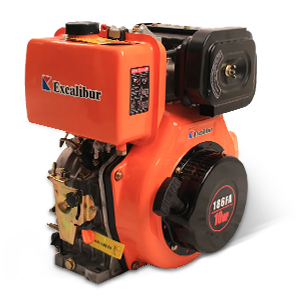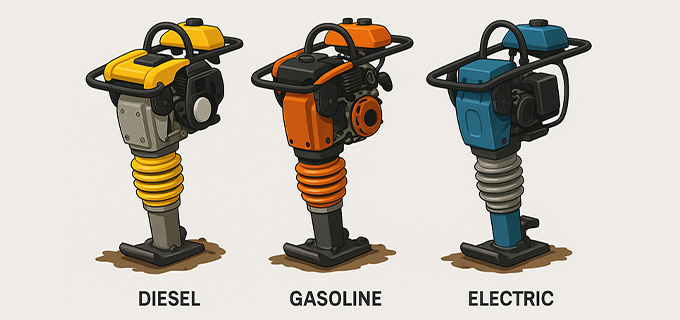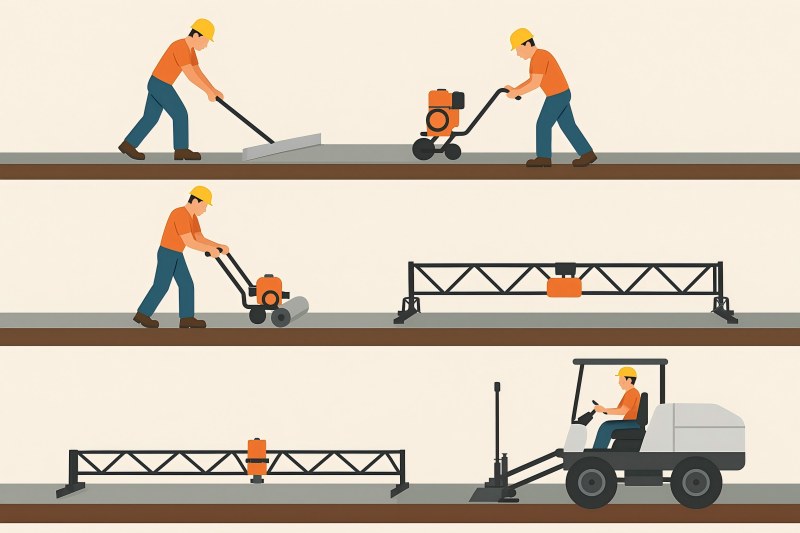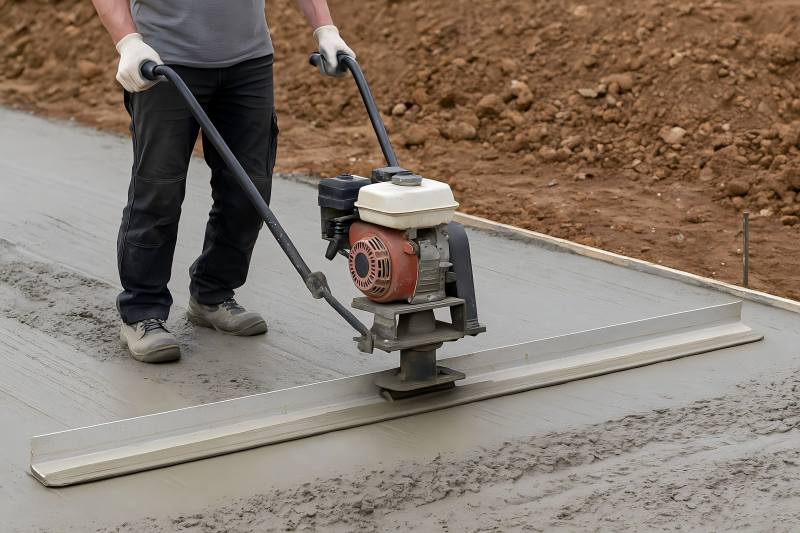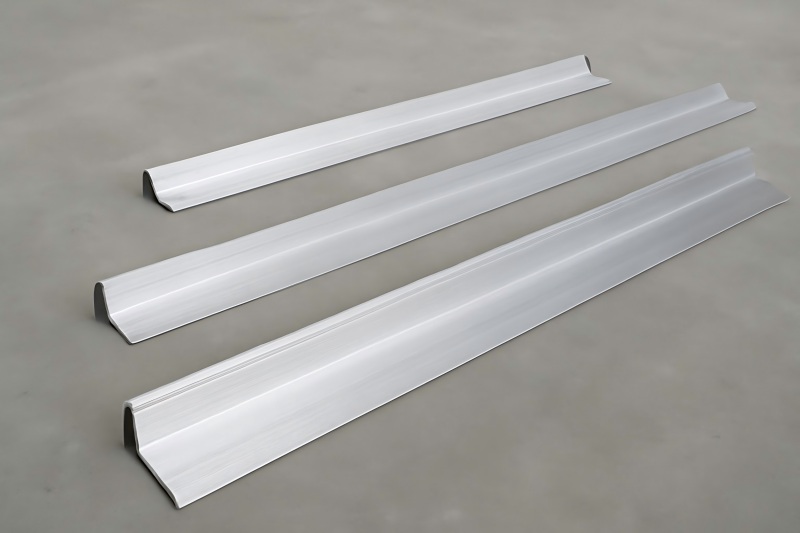For compacting soil in trenches, foundations, and confined areas, tamping rammers are indispensable equipment in the landscaping and construction sectors. These powerful machines come in three main types based on their power source—diesel, gasoline, and electric. Selecting the appropriate kind can have a significant impact on the final outcomes, operational costs, and efficiency of your project. Each type has advantages and disadvantages.
As a manufacturer of tamping rammers, we aim to help contractors, rental companies, and construction professionals make informed decisions tailored to their specific work conditions.
Basics of Tamping Rammers
A tamping rammer—sometimes called a jumping jack compactor—is a vibratory compaction machine used to compress cohesive soil in confined areas. It works through a rapid vertical impact force (up to 700 blows per minute), making it ideal for compacting clay or silt.
Key components of a tamping rammer include:
- Power source (engine or motor)
- Bellows or spring-loaded foot for impact
- Fuel tank or battery
- Handle system for control and mobility
The choice between diesel, gasoline, or electric power affects not just the performance, but also maintenance, fuel cost, environmental impact, and application suitability.
Diesel Tamping Rammers: Power and Performance
Diesel tamping rammers are known for their ruggedness, fuel efficiency, and torque. In heavy-duty applications including infrastructure development, civil engineering, and road construction, they are extensively utilized.
Advantages
- High Torque at Low RPM: Diesel engines provide superior torque, especially useful for dense or moist soil compaction.
- Fuel Efficiency: Diesel fuel typically offers better mileage and lower fuel cost per hour of operation compared to gasoline.
- Durability: Diesel rammers are built to withstand long working hours and tough environments.
Disadvantages
- Heavier Build: Diesel engines tend to be bulkier, which may reduce maneuverability.
- Higher Initial Cost: Diesel units generally cost more than their gasoline counterparts.
- Louder Noise and Vibration: Diesel engines tend to generate more noise, which may violate urban or residential noise ordinances.
Best Use Cases
- Road and highway construction
- Infrastructure projects in remote areas
- Environments with easy diesel fuel access
Gasoline Tamping Rammers: Versatility and Convenience
The most popular kind of rammers on the market are gasoline-powered models, which combine portability, affordability, and performance. They are widely used across various general construction applications.
Advantages
- Ease of Availability: Gasoline is widely accessible, making refueling simple at most job sites.
- Lower Initial Cost: Typically cheaper than diesel and electric models.
- Lightweight Design: Easier to maneuver and transport, making them suitable for smaller teams.
Disadvantages
- Shorter Lifespan: Gasoline engines may wear out faster than diesel, especially with frequent use.
- Higher Operating Cost: Gasoline tends to be more expensive and less fuel-efficient than diesel.
- Emissions: Gasoline engines release more pollutants, which may be regulated in urban areas.
Best Use Cases
- Residential construction
- Light commercial use
- Short- to medium-duration jobs
Electric Tamping Rammers: Clean and Quiet Innovation
Electric tamping rammers represent a modern solution focusing on emission reduction, low noise, and energy efficiency. These models are either corded or battery-powered, and are ideal for environments where noise and fumes are a concern.
Advantages
- Zero Emissions: They emit no exhaust emissions, which makes them ideal for indoor use and places that are sensitive to the environment.
- Quiet Operation: Low noise levels help maintain compliance with noise regulations.
- Low Maintenance: Electric motors require less maintenance and experience less downtime due to their minimal number of moving parts.
Disadvantages
- Limited Power Range: May not provide the same compaction force as fuel-powered models.
- Dependency on Power Source: Corded models require a power outlet; battery models have runtime limitations.
- Higher Initial Cost: Battery-powered models, in particular, tend to be pricier due to advanced technology.
Best Use Cases
- Indoor construction and basements
- Enclosed job sites with ventilation concerns
- Urban areas with strict noise or emission restrictions
Detailed Comparison Table
| Feature / Type | Diesel Rammer | Gasoline Rammer | Electric Rammer |
| Power Output | High | Medium | Low to Medium |
| Fuel Cost | Low | Medium to High | Very Low (electricity) |
| Initial Purchase Cost | High | Low to Medium | Medium to High |
| Maintenance | Moderate to High | Moderate | Low |
| Emissions | Moderate | High | None |
| Noise Level | High | Medium | Low |
| Mobility | Low to Medium | High | Corded: Low / Battery: High |
| Durability | High | Medium | Medium |
| Application | Heavy-duty outdoor work | General-purpose outdoor | Indoor/urban work |
Cost Considerations and ROI
When choosing between these three types, total cost of ownership (TCO) should be a deciding factor, not just the upfront purchase price. Factors to consider:
- Fuel/Energy consumption
- Expected lifespan
- Frequency of use
- Maintenance intervals
- Downtime due to repairs
For example, diesel models may be more expensive up front, but for long-term, high-frequency usage, the lower fuel costs and high durability can offer better value.
Environmental and Regulatory Considerations
With increasing environmental regulations in urban areas, low-emission or zero-emission equipment is becoming a requirement. Electric rammers help meet:
- LEED construction standards
- Indoor air quality requirements
- Noise pollution limits
Governments and municipalities are offering incentives for electric equipment in some regions, which may further offset the purchase cost.
Portability and Handling
Gasoline rammers are often preferred by crews that work across multiple locations due to their lightweight frame and ease of refueling.
Electric models with battery packs are becoming increasingly portable, but battery life is a limiting factor for full-day operation unless extra packs are available.
Diesel rammers, though powerful, require more effort for transport and setup.
Maintenance and Service Life
- Diesel engines need regular upkeep, such as changing the oil, replacing filters, and performing detailed engine inspections.
- Gasoline engines are easier to service but may require more frequent repairs with heavy usage.
- Electric motors require the least maintenance but depend heavily on the integrity of electronic components and batteries.
A properly maintained diesel unit may last 10+ years, while gasoline models generally last 5–7 years, and electric models 5–10 years, depending on battery care.
Which One Should You Choose?
Choose Diesel If:
- You’re working on large-scale outdoor projects.
- Fuel efficiency and long-term usage are key concerns.
- You need maximum compaction power for tough soils.
Choose Gasoline If:
- You need a versatile, mobile, and cost-effective machine.
- Your projects are short- to medium-term.
- You want a unit that’s easy to refuel and operate anywhere.
Choose Electric If:
- You’re working indoors, in urban zones, or noise-restricted areas.
- You want a green, low-maintenance solution.
- Battery runtime and access to electricity are manageable.
As a tamping rammer manufacturer, we’ve seen firsthand how different industries require different machines. There is no “one-size-fits-all.” What works for a trenching contractor in a rural area may not be appropriate for an indoor building crew in a city.
We design and supply diesel, gasoline, and electric tamping rammers tailored to user needs. Our products are tested for compaction efficiency, safety, and longevity, ensuring you get the right performance where it matters most.
When selecting a tamping rammer, take into account the ground conditions, job site location, usage frequency, and environmental regulations. Investing in the right machine means better jobsite results, lower operational cost, and safer working conditions.

